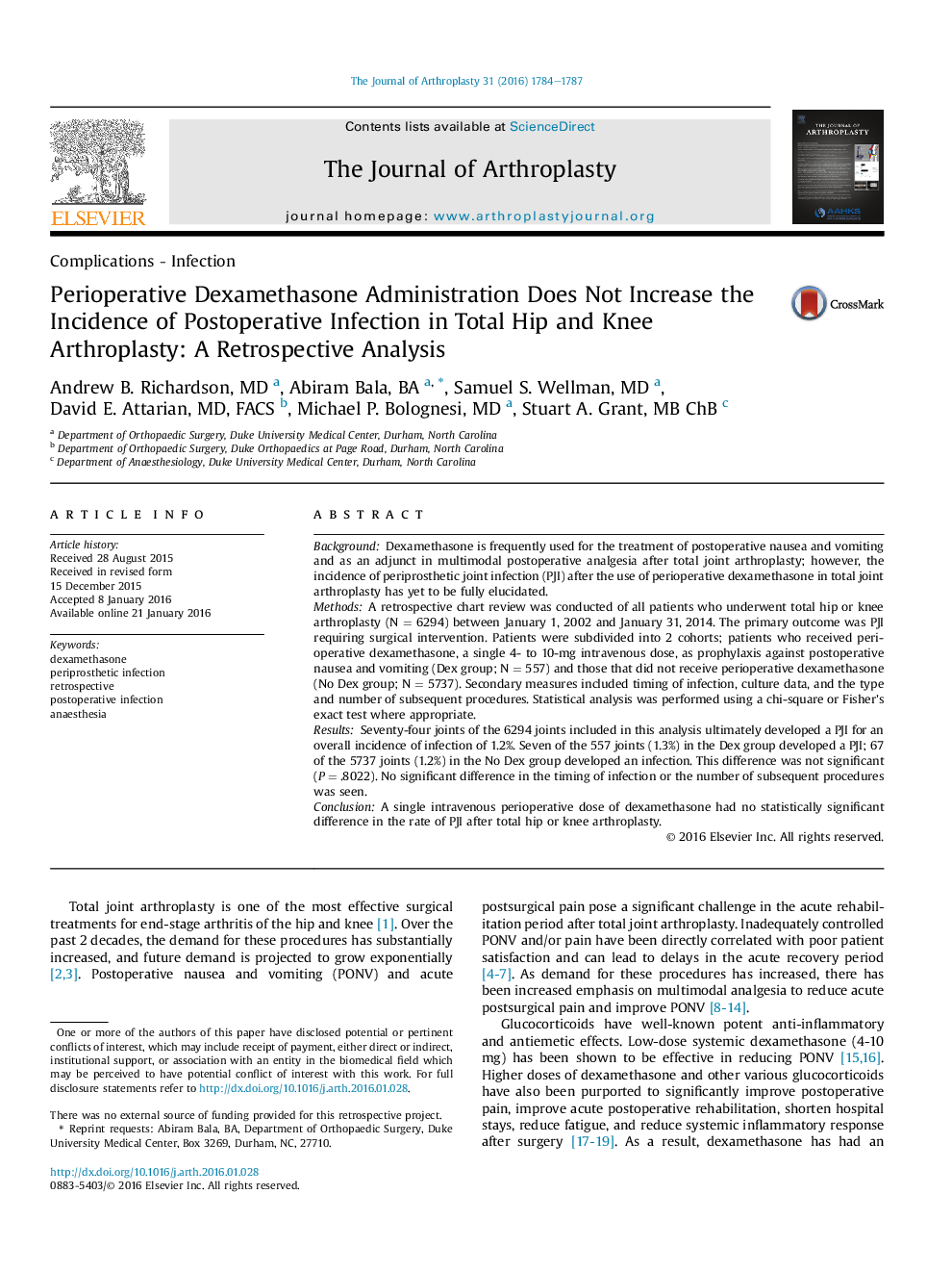| Article ID | Journal | Published Year | Pages | File Type |
|---|---|---|---|---|
| 6208632 | The Journal of Arthroplasty | 2016 | 4 Pages |
BackgroundDexamethasone is frequently used for the treatment of postoperative nausea and vomiting and as an adjunct in multimodal postoperative analgesia after total joint arthroplasty; however, the incidence of periprosthetic joint infection (PJI) after the use of perioperative dexamethasone in total joint arthroplasty has yet to be fully elucidated.MethodsA retrospective chart review was conducted of all patients who underwent total hip or knee arthroplasty (NÂ = 6294) between January 1, 2002 and January 31, 2014. The primary outcome was PJI requiring surgical intervention. Patients were subdivided into 2 cohorts; patients who received perioperative dexamethasone, a single 4- to 10-mg intravenous dose, as prophylaxis against postoperative nausea and vomiting (Dex group; NÂ = 557) and those that did not receive perioperative dexamethasone (No Dex group; NÂ = 5737). Secondary measures included timing of infection, culture data, and the type and number of subsequent procedures. Statistical analysis was performed using a chi-square or Fisher's exact test where appropriate.ResultsSeventy-four joints of the 6294 joints included in this analysis ultimately developed a PJI for an overall incidence of infection of 1.2%. Seven of the 557 joints (1.3%) in the Dex group developed a PJI; 67 of the 5737 joints (1.2%) in the No Dex group developed an infection. This difference was not significant (PÂ = .8022). No significant difference in the timing of infection or the number of subsequent procedures was seen.ConclusionA single intravenous perioperative dose of dexamethasone had no statistically significant difference in the rate of PJI after total hip or knee arthroplasty.
